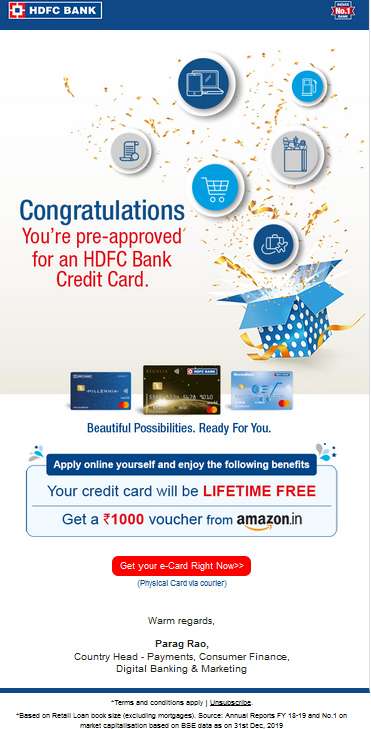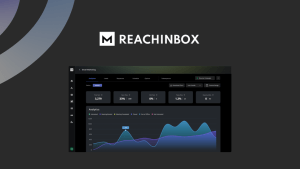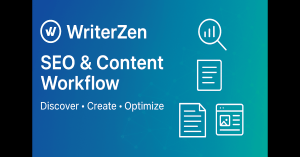Best banking email designs prioritize clarity, security, and personalization. They feature clean layouts, clear calls to action, and brand consistency.
Email marketing is crucial for banks to engage customers and build trust. Effective email designs can improve open rates and customer satisfaction. Clear layouts help users find essential information quickly, while secure elements ensure confidentiality. Personalization, like addressing recipients by name, enhances the user experience.
Consistent branding strengthens the bank’s identity and fosters trust. Visual appeal, including high-quality images and icons, makes emails more engaging. Mobile optimization ensures emails look good on any device. Successful banking emails balance aesthetics and functionality to deliver valuable information seamlessly.
Introduction To Banking Email Designs
In the digital age, banking email designs play a crucial role in communication. Banks use these emails to engage customers, share updates, and ensure security.
Effective email design is essential. It impacts customer trust and satisfaction. A well-designed email can make information clear and accessible. Let’s explore why email design matters in banking.
Importance Of Email Design
Email design affects how customers perceive your bank. A clear, attractive design helps build trust. Good design ensures important messages are not missed. It can also improve customer engagement.
Here are some key elements of effective email design:
- Responsive layout: Emails should look good on all devices.
- Clear call-to-actions: Make it easy for customers to take action.
- Consistent branding: Use your bank’s colors and logo.
- Readable fonts: Text should be easy to read.
Email’s Role In Banking
Emails are essential for bank-customer communication. They serve many purposes:
- Account updates: Notify customers about account activity.
- Promotions: Share new offers or services.
- Security alerts: Inform customers about potential security issues.
- Customer support: Provide assistance and answer questions.
Each email must be designed with care. The goal is to provide clear and useful information. Effective email design can enhance customer relationships and trust.
Key Elements Of Effective Emails
Effective banking emails must captivate and inform. They should build trust and prompt action. Here are the key elements that make banking emails successful.
Clear Subject Lines
Clear subject lines grab attention quickly. They must be specific and concise. Avoid vague terms like “Update” or “Info”. Instead, use clear phrases like “Your Monthly Statement” or “Account Alert”.
A good subject line sets expectations. It tells the reader what to expect. This increases the chances of the email being opened.
| Bad Subject Line | Good Subject Line |
|---|---|
| Update | Important: Action Required on Your Account |
| Info | Your Monthly Account Statement is Ready |
Engaging Visuals
Visuals make emails more engaging. Include relevant images and icons. This breaks up text and makes the email easier to read.
Use your brand colors and logos. This builds brand recognition. Ensure all images are high-quality and load quickly.
- Use images to highlight key points.
- Include icons for quick visual cues.
- Ensure visuals are mobile-friendly.
Emails with good visuals leave a lasting impression. This increases the likelihood of the reader taking action.
Personalization Techniques
In today’s digital age, personalization is crucial for creating engaging email designs. Banks can use various personalization techniques to make their emails more relevant and appealing. These techniques not only boost customer satisfaction but also enhance engagement rates. Let’s explore some effective personalization techniques, focusing on using customer data and dynamic content.
Using Customer Data
Banks can leverage customer data to tailor their email content. By analyzing customer behavior and preferences, banks can create personalized messages. This makes the emails more relevant to each recipient.
Here are some ways to use customer data:
- Segment customers based on demographics
- Track purchase history for personalized offers
- Use browsing behavior to suggest relevant products
For example, a bank might notice a customer frequently checks mortgage rates. They can send personalized emails offering mortgage advice and rates.
Dynamic Content
Dynamic content allows banks to create personalized email experiences. This technique involves changing email content based on the recipient’s data. It’s an effective way to ensure each email feels unique.
Here are some types of dynamic content:
- Personalized greetings with the customer’s name
- Custom offers based on past interactions
- Location-based information and promotions
For instance, an email can greet customers by their name and offer local branch promotions. This makes the email feel more personal and engaging.
Using these personalization techniques can significantly improve the effectiveness of banking emails. Implementing customer data and dynamic content creates a more engaging user experience.
Credit: chamaileon.io
Mobile Optimization
Mobile optimization is crucial for banking email designs. Many users access emails on their phones. Ensuring emails look good on mobile devices is essential. This section discusses the importance of responsive design and mobile-friendly layouts for banking emails.
Responsive Design
Responsive design ensures emails look great on any device. This includes smartphones, tablets, and desktops. A responsive email adjusts its layout based on the screen size.
- Flexible images: Images resize to fit the screen.
- Scalable text: Text remains readable on smaller screens.
- Column stacking: Multiple columns stack vertically on narrow screens.
Responsive design enhances user experience. It ensures emails are readable and visually appealing on all devices.
Mobile-friendly Layouts
Mobile-friendly layouts simplify navigation and readability. Clear and concise layouts work best on small screens.
- Single-column layouts: Simplify the design and improve readability.
- Large buttons: Ensure buttons are easy to tap.
- Short paragraphs: Make content easy to read.
Use large fonts and clear calls-to-action. This helps guide users through the email. Mobile-friendly layouts ensure users can interact easily with the email content.
Call To Action Strategies
Creating an effective call to action (CTA) is essential in banking emails. A well-crafted CTA can boost engagement and drive conversions. Let’s explore some strategies for creating effective CTAs.
Effective Ctas
Effective CTAs are clear and concise. They tell the reader exactly what to do. Use action verbs like “Sign Up”, “Learn More”, or “Get Started”.
Avoid vague phrases. Instead, use phrases that give clear instructions. For instance, “Open Your Account Today” is better than “Click Here”.
Placement And Design
CTA placement is crucial. Place your CTA where it is easily visible. The top or bottom of the email works well.
Design your CTA button to stand out. Use contrasting colors. Ensure the text is readable. A large, bold font works best.
| CTA Strategy | Description |
|---|---|
| Clear Instructions | Use specific action verbs and clear instructions. |
| Visible Placement | Place CTAs where they are easily noticeable. |
| Contrasting Colors | Make your CTA button stand out with colors. |
| Readable Text | Use large, bold fonts for CTA text. |
- Use action verbs in CTAs.
- Place CTAs at the top or bottom.
- Design buttons with contrasting colors.
- Ensure CTA text is readable.

Credit: in.pinterest.com
A/b Testing And Analytics
Understanding A/B Testing and Analytics can significantly enhance banking email designs. This method helps identify the most effective elements for engagement. By testing and analyzing, banks can refine their emails to meet customer needs better.
Testing Different Designs
A/B testing involves creating two versions of an email. These versions differ in one key element. For instance, one email may have a blue button, and another a red button. This helps determine which button color attracts more clicks.
Here’s a simple breakdown:
| Email Version | Element Tested | Audience |
|---|---|---|
| Version A | Blue Call-to-Action Button | 50% of Recipients |
| Version B | Red Call-to-Action Button | 50% of Recipients |
Testing different designs helps identify what works best. This method ensures emails are more engaging and effective.
Analyzing Results
After sending the test emails, banks need to analyze the results. Look at the click-through rates (CTR) and open rates. These metrics indicate which email performed better.
Important metrics to consider:
- Click-through Rate (CTR)
- Open Rate
- Conversion Rate
For example, if Version B’s red button has a higher CTR, it means more recipients clicked on it. This data is crucial for refining future emails.
Using these insights helps tailor emails to customer preferences. This leads to higher engagement and better customer satisfaction.
Effective A/B Testing and Analytics ensure that banking emails are optimized for success. By continuously testing and analyzing, banks can stay ahead in the competitive market.
Compliance And Security
In the world of banking, email design must prioritize compliance and security. Customers trust banks with sensitive data. A secure email design ensures this data stays protected.
Ensuring Data Privacy
Data privacy is crucial in banking emails. Emails must use encryption to protect customer information. This helps prevent unauthorized access.
Include clear privacy policies in emails. Customers need to know their data is safe. Use simple language to explain these policies.
Implement two-factor authentication for email access. This adds an extra layer of security. It makes it harder for hackers to breach accounts.
Regulatory Requirements
Banks must follow regulatory requirements for email communications. These rules protect customers and ensure fairness. Non-compliance can lead to heavy fines.
The following table outlines some key regulations:
| Regulation | Description |
|---|---|
| GDPR | Protects data privacy in the EU. |
| CCPA | Ensures data protection in California. |
| CAN-SPAM | Regulates commercial emails in the USA. |
Emails must include an unsubscribe option. This is required by many regulations. It allows customers to opt-out of emails easily.
Regularly audit your email designs for compliance. This ensures they meet current regulations. Update your designs as needed to stay compliant.
Top Banking Email Templates
Discovering the Top Banking Email Templates can transform your customer communication. These templates provide a balance of professional design and personalization. Let’s explore the best examples and how to customize them for your bank.
Successful Examples
Successful email templates blend visual appeal with clear messaging. Here are some top examples:
| Template Name | Key Features |
|---|---|
| Account Updates | Real-time notifications, clear headers, and concise summaries |
| Promotional Offers | Bold CTAs, attractive visuals, and personalized offers |
| Transaction Alerts | Immediate alerts, simple layout, and security tips |
Template Customization
Customizing templates makes emails more relevant and engaging. Here are some tips:
- Use personalized greetings to make emails feel individual.
- Incorporate dynamic content like recent transactions.
- Adjust colors and fonts to match your brand identity.
- Include interactive elements such as buttons and links.
Custom templates can increase customer engagement significantly. They make your emails stand out.
Future Trends In Email Design
The landscape of banking email design is evolving rapidly. Modern technologies and user expectations drive these changes. Here are some future trends in email design that will shape the industry.
Ai And Automation
Artificial Intelligence (AI) and automation are transforming email marketing. AI can analyze user data to create personalized emails. These emails are more likely to engage recipients. Automation streamlines the process, saving time and resources.
Here are some key features of AI and automation in email design:
- Personalization: AI can tailor content based on user behavior.
- Automated Campaigns: Set up sequences that trigger based on user actions.
- Data Analysis: AI can provide insights to optimize future emails.
These features improve the effectiveness of email campaigns. They also enhance customer satisfaction.
Interactive Emails
Interactive emails are another significant trend. These emails engage users more effectively. They offer a more dynamic experience compared to static emails.
Interactive elements in emails can include:
- Surveys: Users can respond directly within the email.
- Quizzes: Engage users with fun, interactive questions.
- Carousels: Showcase multiple products or services in one email.
Interactive emails make the content more engaging. They also encourage users to take action. This results in higher conversion rates.
Here is a comparison table showing the benefits of traditional vs. interactive emails:
| Aspect | Traditional Emails | Interactive Emails |
|---|---|---|
| Engagement | Low | High |
| Conversion Rate | Moderate | High |
| User Experience | Static | Dynamic |
By adopting these trends, banking emails can become more effective. They can also better meet the needs of modern users.

Credit: www.pinterest.com
Frequently Asked Questions
What Makes A Good Banking Email Design?
A good banking email design is clean, professional, and user-friendly. It includes clear calls to action, personalized content, and mobile responsiveness.
How To Improve Banking Email Open Rates?
To improve open rates, use compelling subject lines and personalize the emails. Ensure the content is relevant and valuable to the recipient.
Why Is Mobile Responsiveness Important For Banking Emails?
Mobile responsiveness ensures emails are easily readable on all devices. This improves user experience and engagement, leading to higher conversion rates.
What Are Essential Elements In A Banking Email?
Essential elements include a clear subject line, personalized content, strong call-to-action, and professional design. Ensure it’s mobile-friendly and secure.
Conclusion
Crafting effective banking email designs is crucial for customer engagement. Focus on simplicity, personalization, and mobile optimization. These elements enhance user experience and drive higher open rates. Implement these tips to create impactful emails. Stay updated with the latest trends to keep your email campaigns fresh and relevant.







